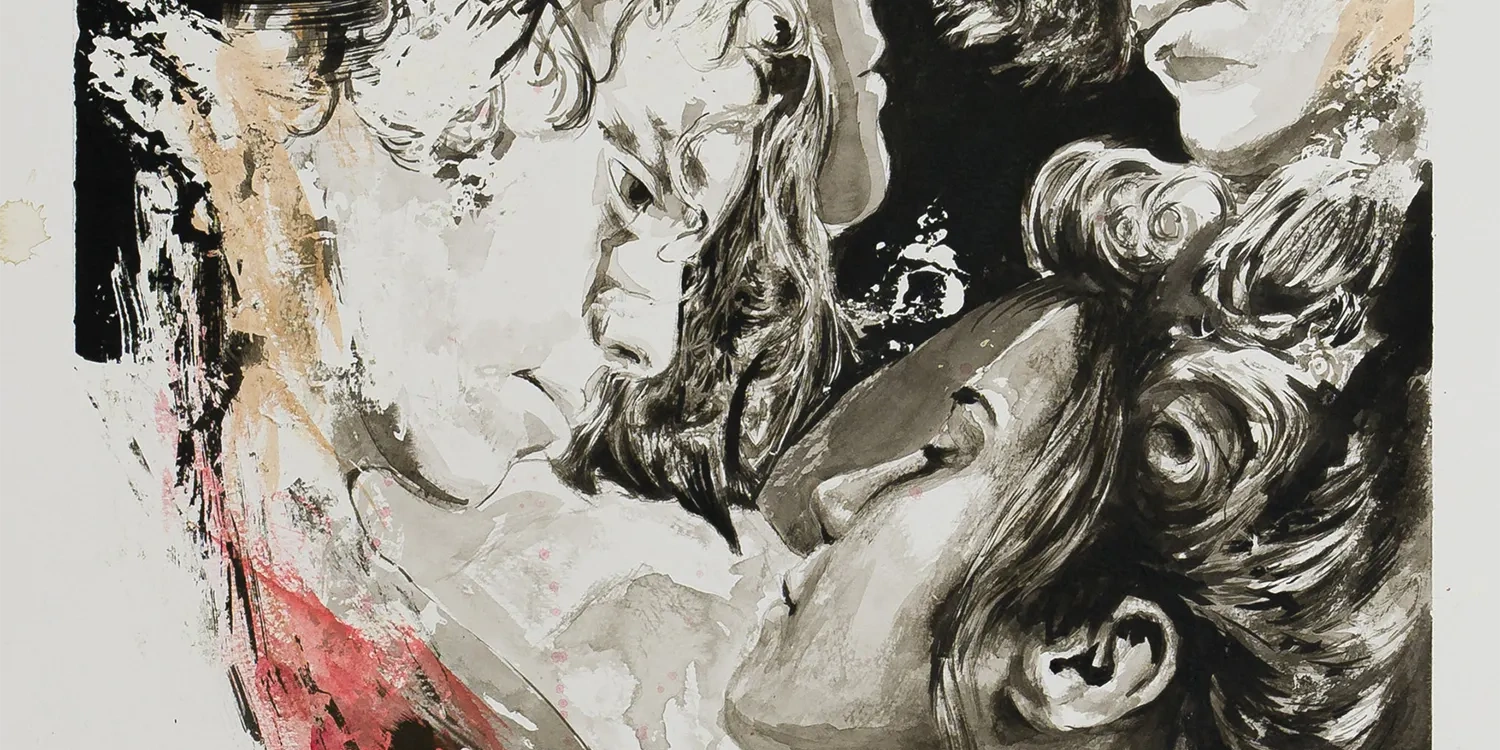The Concept
The concept behind Alex Righetto’s exhibition revolves around the idea that Romeo and Juliet “kill” their childish egos instead of themselves.
Their trials and tribulations serve as catalysts for their growth together, rather than leading them to a tragic end.
In his fresh perspective, the focus isn’t on the love between the doomed lovers, but rather on the personal transformations required to sustain a relationship.
In this context, seen as “victims” of both their families and themselves, the characters undertake a transformative journey, driven by love—the force Righetto sees as capable of bettering the world.
He poses the question: how does one distinguish true “love” from mere fleeting youthful infatuation?
How to recognize true love?
The central piece, likely addressing this question, depicts the iconic balcony scene of Romeo and Juliet.
After exploring a wide range of visual interpretations, Righetto was compelled to adopt a style distinctly different from existing portrayals.
The concept behind Alex Righetto’s exhibition revolves around the idea that Romeo and Juliet “kill” their childish egos instead of themselves.
Their trials and tribulations serve as catalysts for their growth together, rather than leading them to a tragic end.
In his fresh perspective, the focus isn’t on the love between the doomed lovers, but rather on the personal transformations required to sustain a relationship.
In this context, seen as “victims” of both their families and themselves, the characters undertake a transformative journey, driven by love—the force Righetto sees as capable of bettering the world.
He poses the question: how does one distinguish true “love” from mere fleeting youthful infatuation?
The central piece, likely addressing this question, depicts the iconic balcony scene of Romeo and Juliet.
After exploring a wide range of visual interpretations, Righetto was compelled to adopt a style distinctly different from existing portrayals.

The meaning of the painting
In Alex Righetto’s artwork, one can discern a whirlwind with two profiles overlapping and opposing each other. In the background, the inverted profiles illustrate how one must also embody the other, fully embracing their perspective, to claim to love genuinely.
It is a play on both the visual and intellectual, which he regards as the interpretative key and the pinnacle of the collection.
This is why the two lovers find themselves needing to eliminate that negative part of themselves that hindered the relationship.
That childish part with which we are all born and that defines us from our earliest years can be detrimental in a romantic relationship. In such a relationship, giving and receiving must be balanced, and there’s an understanding that the other person is, in the end, an extension of ourselves.